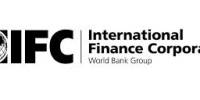Credit Risk Grading (CRG):
Credit risk grading is an important tool for credit risk management as it helps the Banks & financial institutions to understand various dimensions of risk involved in different credit transactions. The aggregation of such grading across the borrowers, activities and the lines of business can provide better assessment of the quality of credit portfolio of a bank or a branch. The credit risk grading system is vital to take decisions both at the pre-sanction stage as well as post-sanction stage.
At the pre-sanction stage, credit grading helps the sanctioning authority to decide whether to lend or not to lend, what should be the loan price, what should be the extent of exposure, what should be the appropriate credit facility, what are the various facilities, what are the various risk mitigation tools to put a cap on the risk level.
At the post-sanction stage, the bank can decide about the depth of the review or renewal, frequency of review, periodicity of the grading, and other precautions to be taken.
Having considered the significance of credit risk grading, it becomes imperative for the banking system to carefully develop a credit risk-grading model that meets the objective outlined above
Definition of Credit Risk Grading:
- The Credit Risk Grading (CRG) is a collective definition based on the pre-specified scale and reflects the underlying credit-risk for a given exposure.
- A Credit Risk Grading deploys a number/ alphabet/ symbol as a primary summary indicator of risks associated with a credit exposure.
Credit Risk Grading is the basic module for developing a Credit Risk Management system.
Importance of Credit Risk Grading:
1. Well-managed credit risk grading systems promote bank safety and soundness by facilitating informed decision-making.
2. Grading systems measure credit risk and differentiate individual credits and groups of credits by the risk they pose. This allows bank management and examiners to monitor changes and trends in risk levels.
3. The process also allows bank management to manage risk to optimize returns.
Use of Credit Risk Grading:
- The Credit Risk Grading matrix allows application of uniform standards to credits to ensure a common standardized approach to assess the quality of individual obligor, credit portfolio of a unit, line of business, the branch or the Bank as a whole.
- As evident, the CRG outputs would be relevant for individual credit selection, wherein either a borrower or a particular exposure/facility is rated. The other decisions would be related to pricing (credit-spread) and specific features of the credit facility. These would largely constitute obligor level analysis.
Risk grading would also be relevant for surveillance and monitoring, internal MIS and assessing the aggregate risk profile of a Bank. It is also relevant for portfolio level analysis.
Credit Risk Grading:
The following CRG is being set by the Bangladesh Bank, which helps to evaluate the borrower. Risk manager will input data available from their income statement, balance sheet and cash flow to the (FSS) known as Financial Spread Sheet, which will calculate the risk ratio and provide the score based on the total score of profitability, risk ratio etc. manager will grade the client. A borrower will be categorized ‘Superior’ when he will provide full-cash security, or guaranteed by the government or international bank. This type of guarantee is superior because there is zero possibility of loan being classified or zero exposure. Next, a borrower is classified as ‘Good’ when the score is 85 or more. ‘Acceptable’ when his credit risk grading score is between 75 and 84. Banker need not to be worry till the score is 75 because they are considered to be ‘Good-performing loan’. When the client is ranked ‘Marginal’ banker needs to be careful about sanctioning loan because this client has 50% probability that he might classify. Then as the score become less by 10 points the client will be categorized ‘Special Mention’, ‘Substandard’, ‘Doubtful’ and ‘Bad/Loss’ when score is below 35. These four are called Non-performing loan. This scoring system is a decision making tool.
















